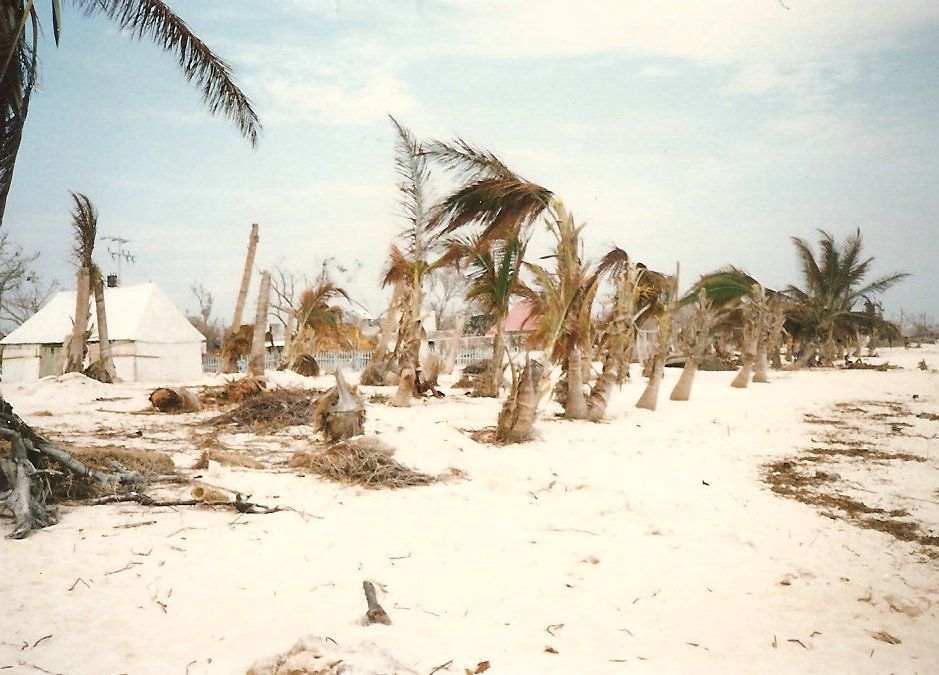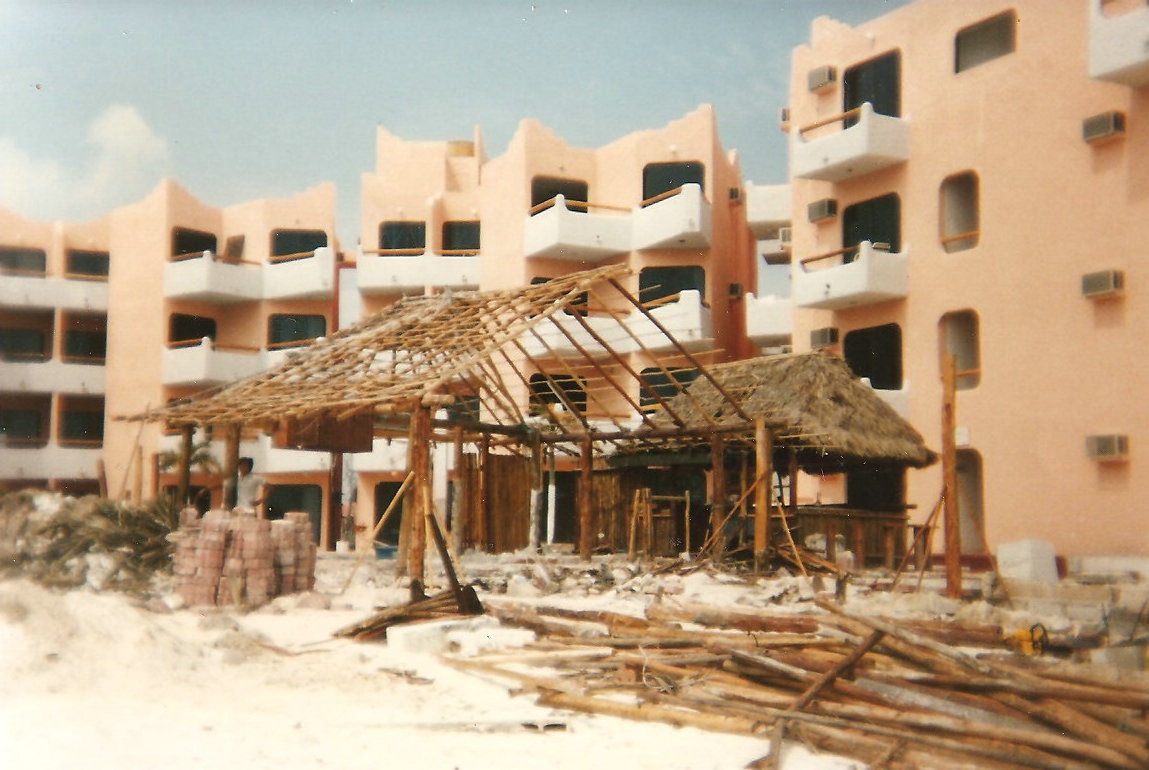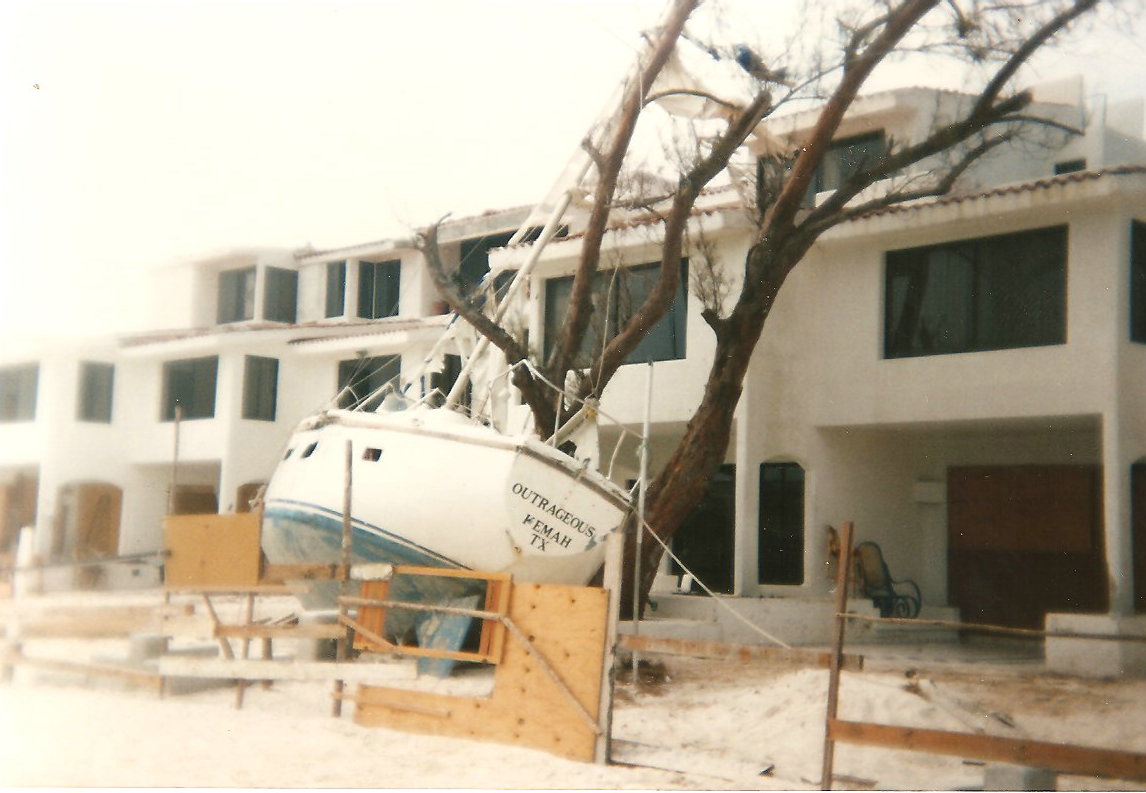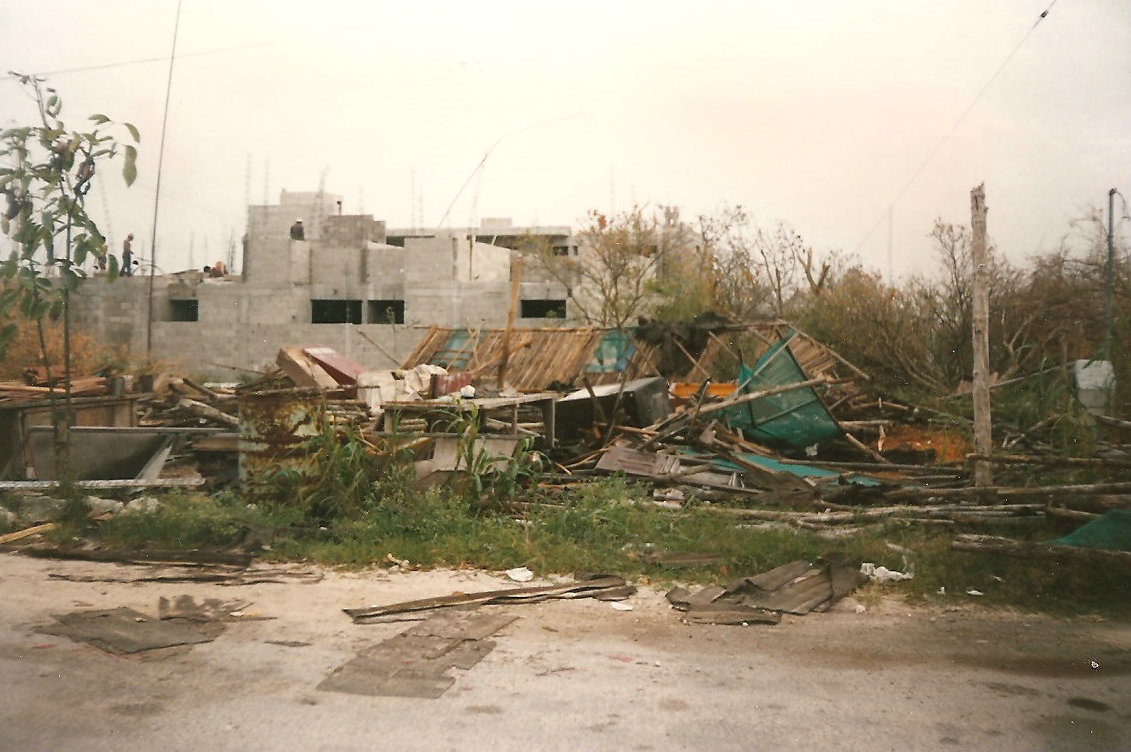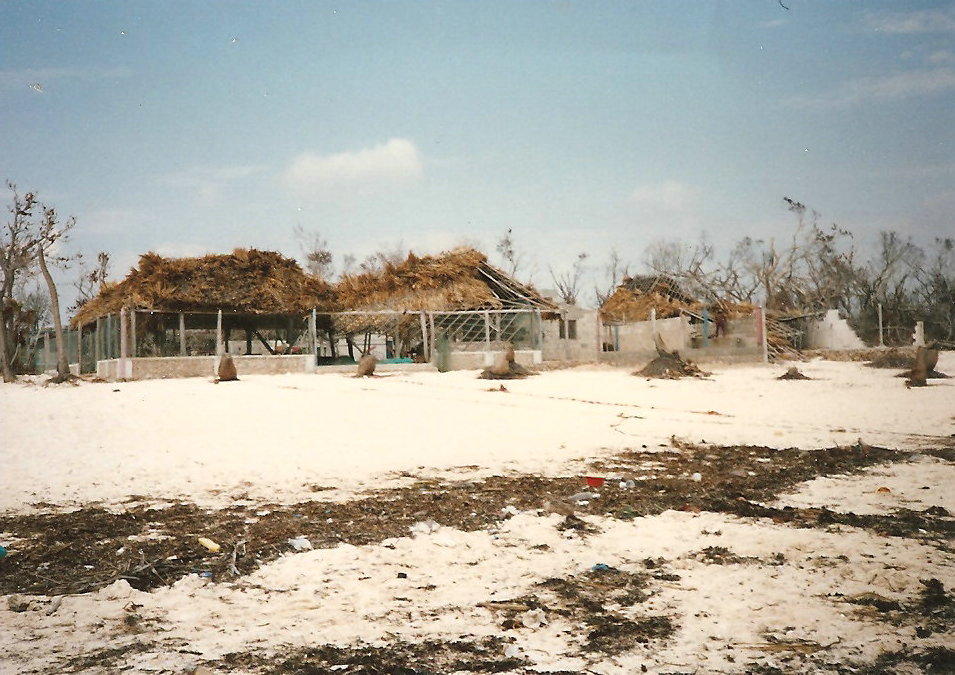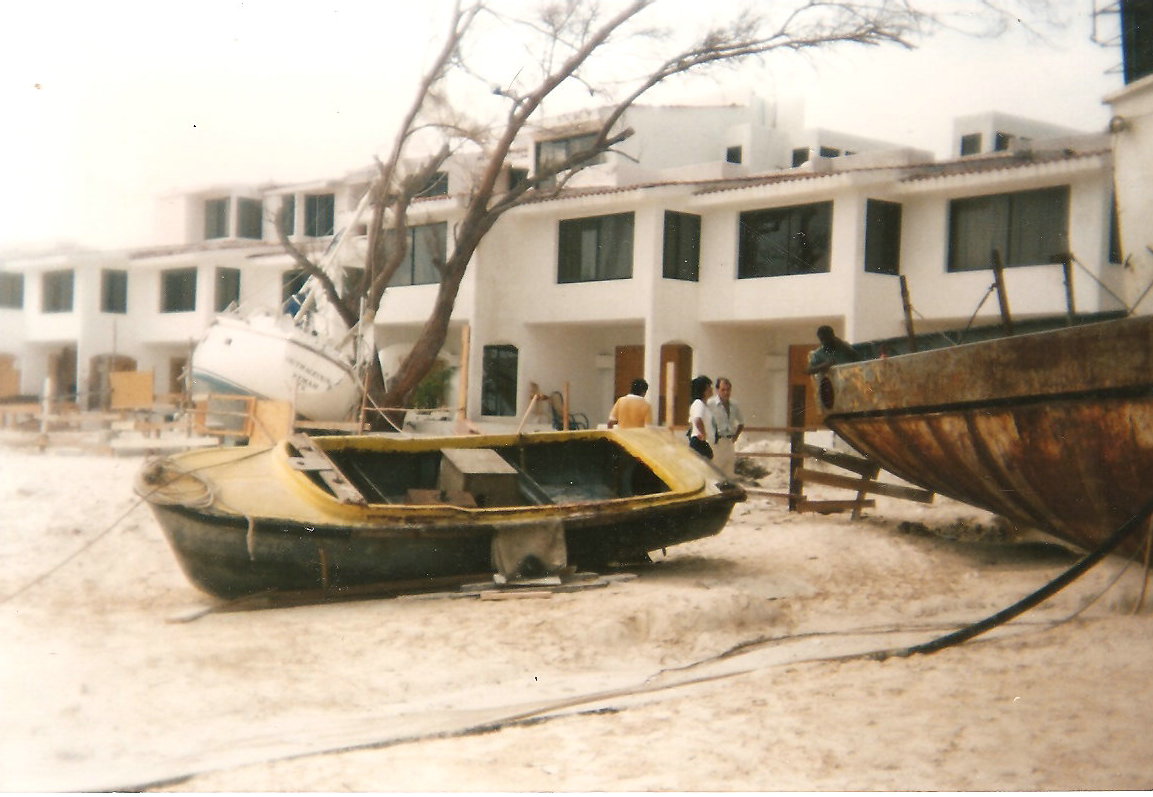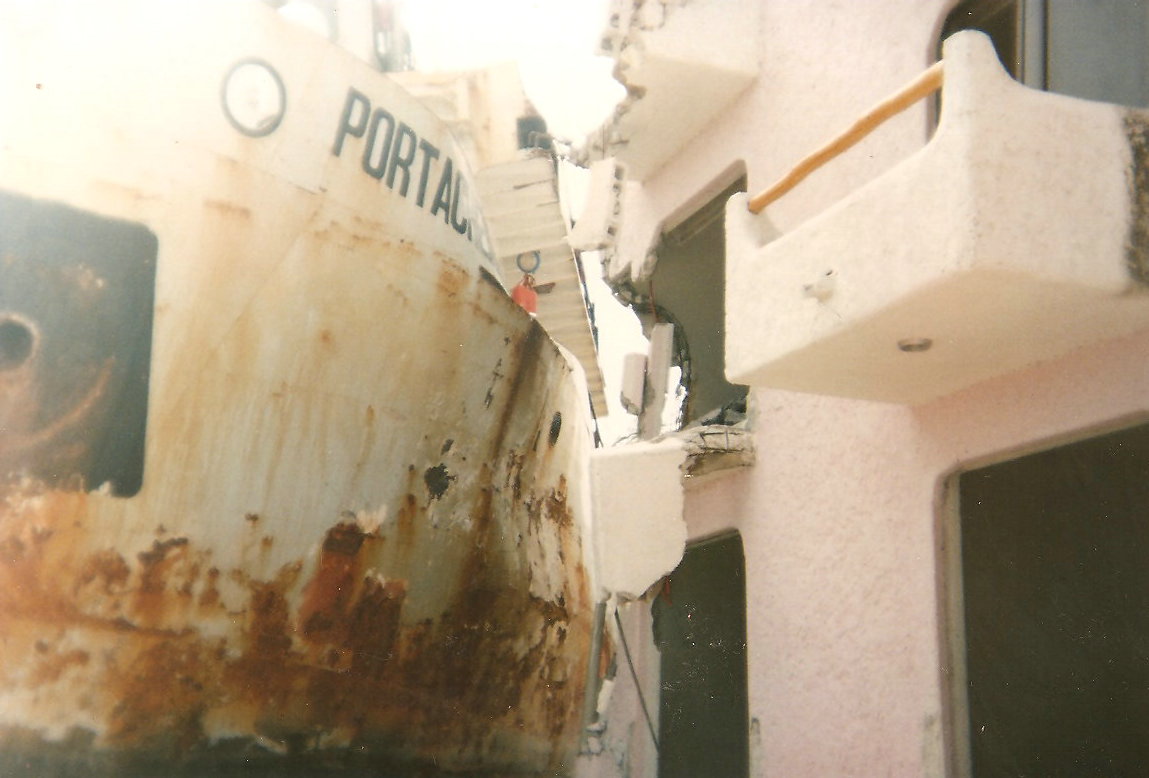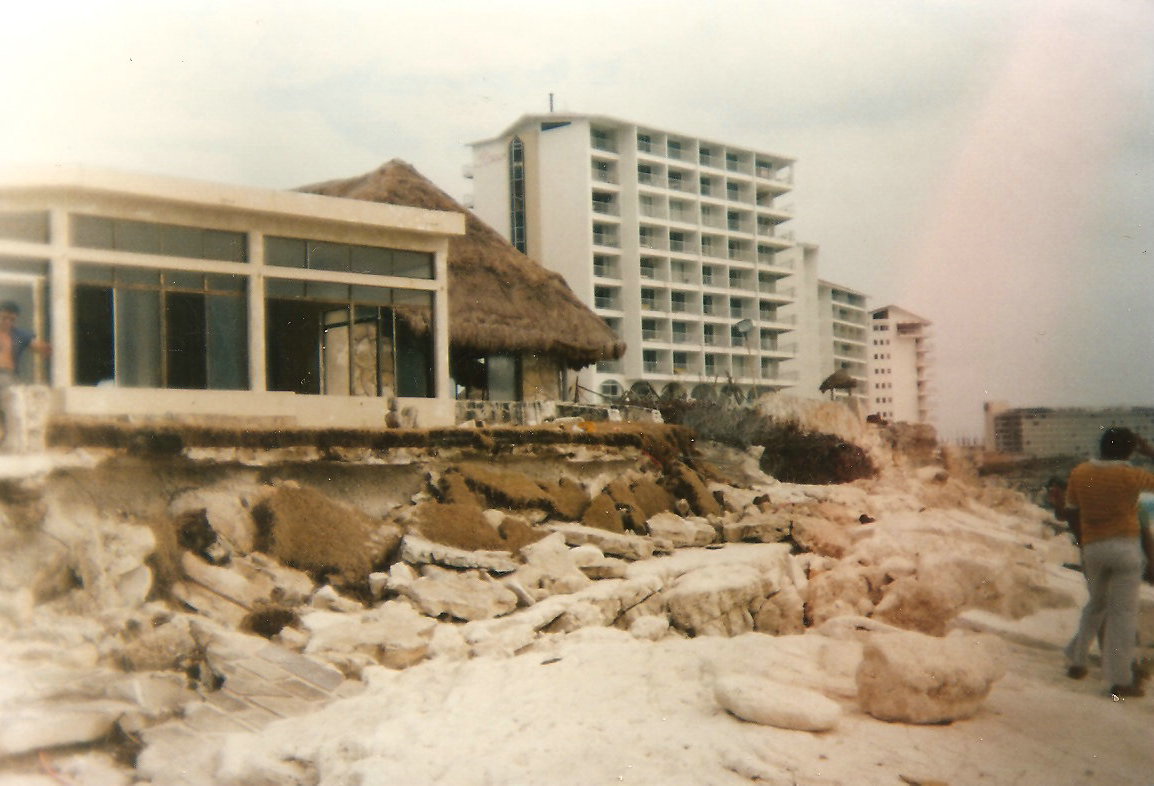Overlooking the gorgeous waters of the Caribbean Sea, I could hardly wait to revisit the Mayan archaeological site of Tulum. Working for the cruise lines, I had the amazing opportunity to explore many of the Mayan ruins in the Yucatan and learn about their spectacular culture.
I had arrived by colectivo (the shuttle van) from Playa del Carmen (80 pesos round trip) which took just a little over 45 minutes one way. It was a wild ride and it took me back to the days of traveling this road in the 1990s. We always joked about how fast the buses traveled along this long stretch of road. Does Mexico have a speed limit?
Staying in Tulum, I was so happy to have arrived at the site, long before the cruise ship crowds. With plenty of time to explore, I visited each of the Mayan structures and then spent the rest of the afternoon relaxing on the beach.
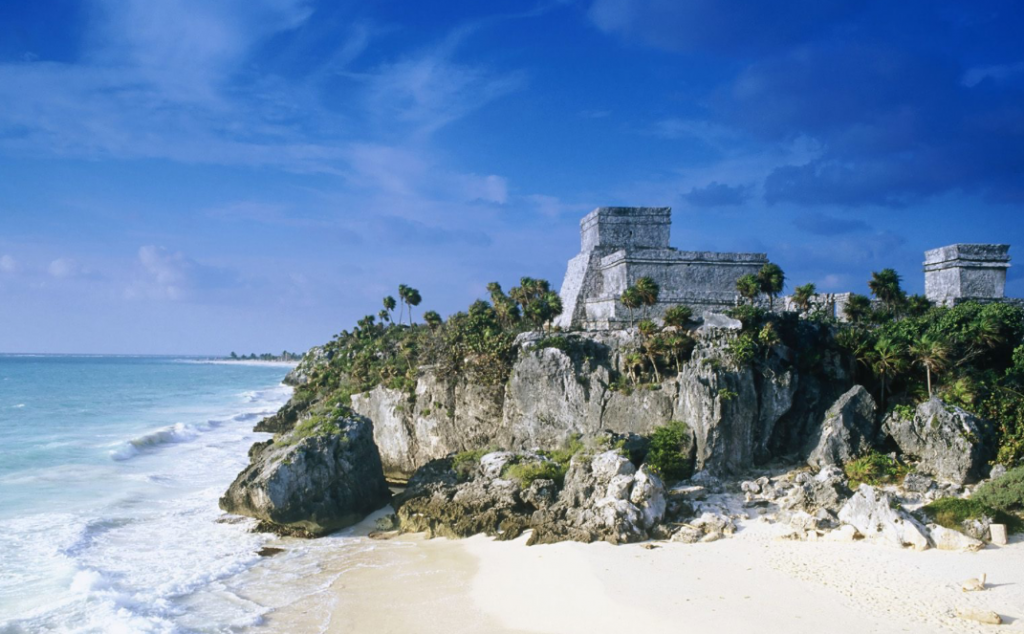
The Mayans were responsible for building several magnificent settlements throughout today’s countries of Guatemala, Honduras, Belize and El Salvador. While much is known about ancient Greek and Roman civilization, there is extensive evidence of the intellect of the Mayans as found in their construction, mathematics and astronomy.
Their temples and buildings include magnificent stairways, columns, terraces, decorative carving, arches and moldings. Research has shown that the Mayans used three symbols for use in counting with the dot representing the number one, a line for the number five and a decorative shell standing in as the number zero. They also succeeded in developing the 365 day calendar known as the Haab based on the solar system. Similar to the Egyptians, the Mayans used hieroglyphs to document historical events.
On the eastern coast of the Yucatan peninsula, Tulum was the most important archaeological site of the Maya.
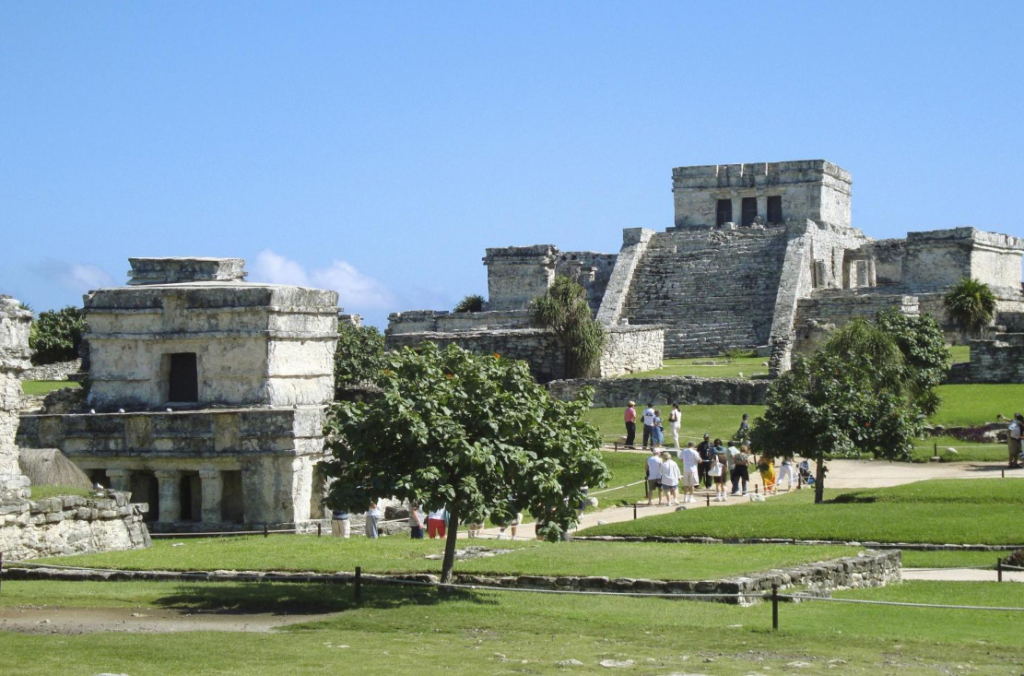
Tulum has a special place in my heart as I had first toured this location in my early 20s. I was amazed by the stunning architecture and history of the Mayan civilization as well as the location of this beautiful place. I couldn’t help but stand in awe, feeling as though I had stepped back in time entering this magical place.
Tulum was one of several walled cities within the state of Quintana Roo. Most likely inhabited between the 13th and 15th centuries, it was an important port city for trading obsidian. Beautifully built on a bluff that faces the Caribbean Sea, Tulum may have been known as Zama, which means City of Dawn. It is also believed that Tulum was an important site for the worship of the Descending (or Diving) god.
According to the document, Las Relaciones de Yucatan (the Accounts of Yucatan), the Spanish first encountered Zama during their 1518 expedition, conquering the site in 1544. By the end of the 16th century, the site was completely abandoned.
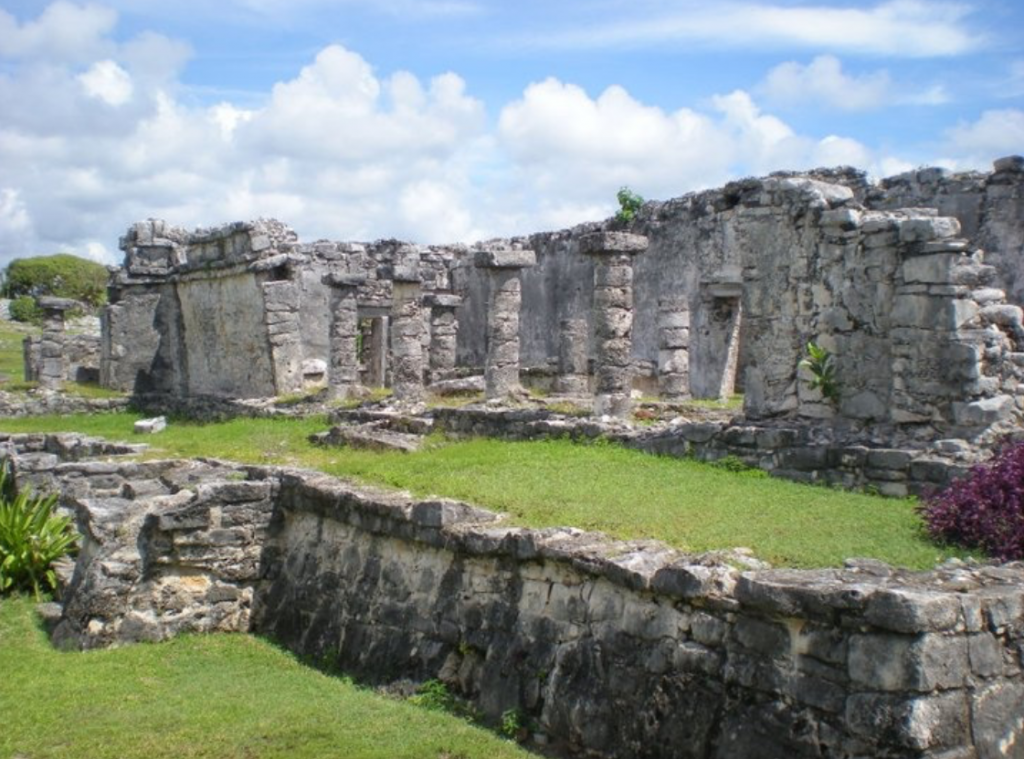
In 1847, the War of the Castes saw an uprising of the Mayans against the government and landowner as Tulum became their refuge. Following another revolt in 1871, Tulum was considered a shrine until 1916 when restorations of the site were led by Sylvanus Morley and George P. Howe. By 1938, Mexican archaeologist Miguel Angel Fernandez began his conservation and restoration work of the site.
Stretching nearly four miles along the coast are buildings, platforms and tombs within the Inner and Outer Precincts (The Great Wall). The wall may have been built as a defense for the city but also separates the government and religious buildings. With five narrow entrances, there may have also been watchtowers on the northwest and southwest corners.
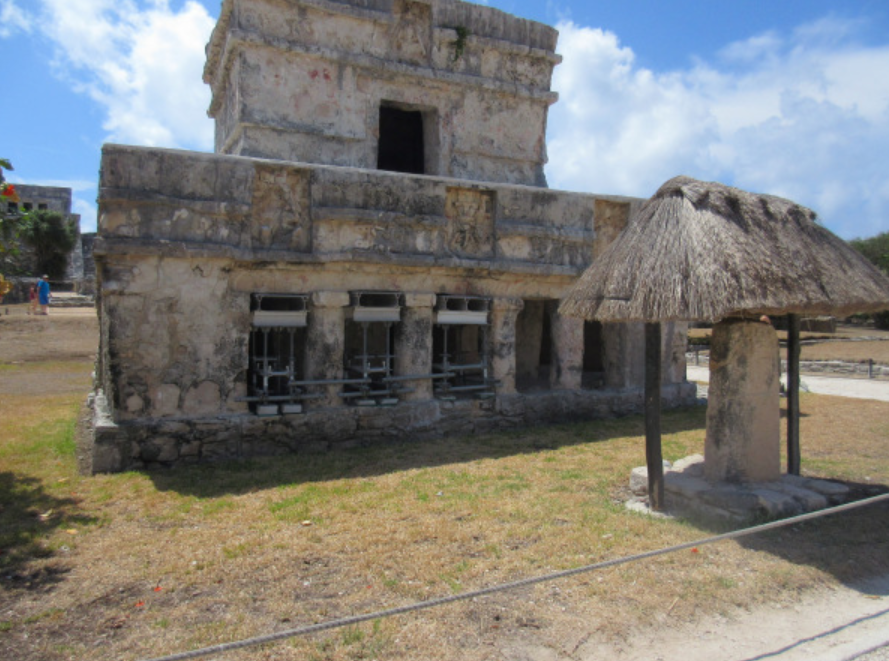
The inner precinct may have been where the more important buildings would have created the city’s center. These structures would have included the Castillo (Castle), the Temple of the Descending God, and the Temple of the Initial Series with additional temples, shrines and platforms throughout.
One of the most important of these buildings was the Temple of the Frescoes which stands east of the main street. It is believed that this temple was used to track the movements of the sun. Integral to the society’s social and religious activities, the murals, frescoes, and sculptures gave the world an insight into Mayan culture.
Built over various stages, the temple’s first level was a simple ground level structure with a small altar on the opposite end of the entrance. The original murals have been exquisitely preserved by the gallery built in its second stage. These religious paintings illustrate the Mayan gods, entwined serpents and offerings, based on this Central American culture.
In its second stage, a chamber was added in addition to columns, capitals and pillars. Stucco mask figures make up the frieze in addition to niches that may have held important relics. Additional paintings include one of the Descending god surrounded by figures with elaborate headdresses. The architrave displays red handprints, an unusual relief of men and snakes as well as two large masks of the gods, most likely that of Char and Itzamna, the giver of life.
To support the temple built on the next level, the third stage required reinforcements to sustain this religious place of worship.
Outside of the temple was displayed a stele engraved with text but the stone was so worn that it could not have been deciphered.
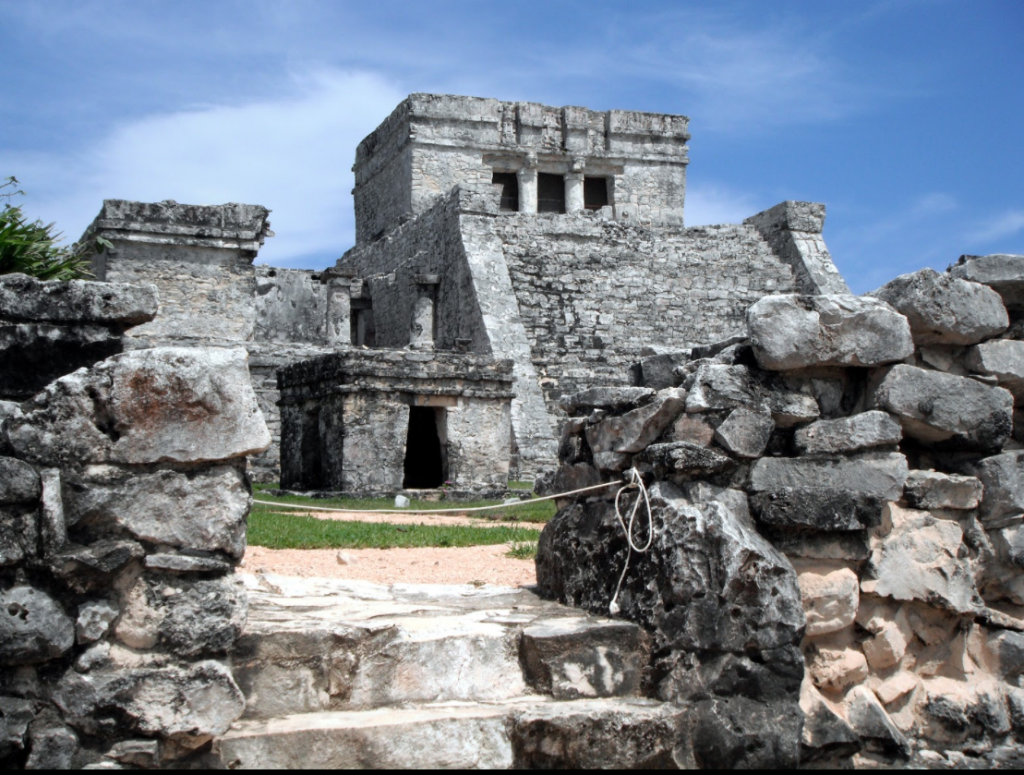
Second to the Temple of the Wind rising up from the coast of the Caribbean Sea, the Castillo also dominates the skyline of this archaeological site. The tallest building in Tulum, the Castle has evolved over many years to include a ginormous buttress, double gallery on a terrace and a mountain of stairs reaching a gorgeous temple on top.
Shrines, niches, porticos and serpent shapes were discovered deep in its interior as well as a figures, stucco masks and feather headdresses.
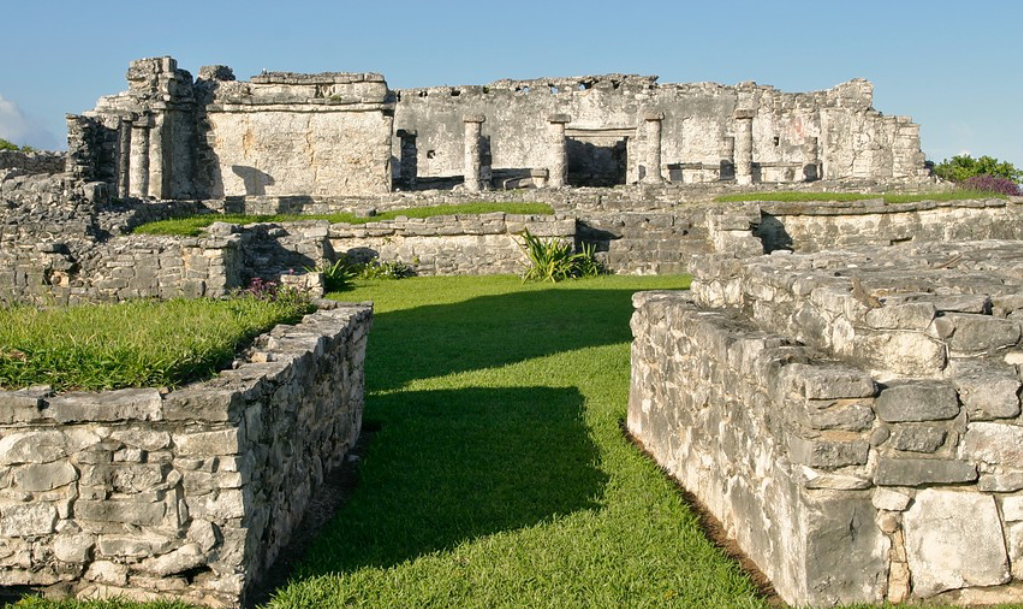
Tulum’s House of the Halach Uinik was the home of the supreme ruler of Tulum during the colonial period. Standing on a platform, the entrance has four columns and towards the rear walkway, a roofed shrine. Inside of the two vaulted tombs, archaeologists found fragments of incense burners. On the east side of the structure is a carving of the Descending god.

Iconic photos of Tulum show the Temple of the Wind against the background of the crystal blue Caribbean ocean. This is what originally drew me to the archaeological site in the early 1990s.
With only a single room, the Mayans would gain entrance from the north. Unlike the other structures, this temple stood on a round platform which was used in temples dedicated to the god of the wind, Ehecati throughout the Central Plateau.
It is estimated that there are sixty structures that have been labeled at Tulum. Among them are:
- the Temple of the Descending god, a well preserved site with murals, carvings depicting religious scenes and elaborate cornices;
- House of the Chultun, a cistern that stored rainwater;
- the Temple of the Initial Series, where a stele was found, now housed in the British Museum;
- the House of the Columns, known as the Great Palace;
- House of the Cenote, which stood over an ancient well
I could have spent a couple of days exploring this spectacular site where my fascination of the Mayan culture began but I had scheduled a dive at Akumal to revisit another one of my favorite activities in Quintana Roo.
Have you visited Tulum and did you find yourself drawn to the Mayan culture? I would love to hear about your adventure if you would kindly leave a message in the comments section below. Many thanks for reading about my revisit to Tulum and wishing you many Happy Travels!
What to See and What to Do:
- Admission Fee: 65 pesos
- Hours: Open daily from 8AM to 5PM, last admission at 4PM
- Length of Visit: 2 – 4 hours
- Amenities: Shopping center, store, ticketing window and restrooms
- How to Get There: The colectivo from Playa del Carmen is located at Avenida 15 and Calle 2. The drivers will be holding signs and/or calling out the destination, so make sure you are listening or looking for “Tulum”. You can access the shuttle schedule by visiting their website at ado.com.mx. The shuttle will drop you off at ruins first where there will be a 10 minute walk from this location or you can take a little train for 20 pesos. If you are driving from Playa del Carmen, take Highway 307 South. If you are staying in Tulum, the trip is on 5 minutes away.
- Tips for Your Visit: Arrive early as the ruins are crowded in the afternoon and is the hottest time of the day. Do not purchase tickets at stands along the entrance to Tulum as they may not be valid tickets. Wait until you reach the entrance into the Mayan ruins. Wear comfortable shoes, bring lots of water and wear sunscreen and a hat. There are no restaurants at the site, so if you are hungry, eat outside of the entrance. Climbing the ruins and touching them is prohibited. If you want to stay to enjoy the beach, make sure you bring a swimsuit and beach towel.
Where to Stay:
Gramercy Tulum
Av. Boca Paila Km 9.5,
Tulum Beach, Zona Costera, 77760 Tulum, Q.R.
Telephone: +52 1 (984) 877 0483
- Amenities: Oceanfront, Restaurant and Bar, Free WIFI, Spa, pet friendly, room service
Where to Eat:
Hartwood
Carr. Tulum-Boca Paila 7-6Km,
Tulum Beach, 77780 Tulum, Q.R., Mexico
reservations@hartwoodtulum.com
One of the most sought out restaurants in Tulum, you must make reservations in advance for the months of June, July and August
What to Eat:
- Cochinita Pibil is a suckling pig marinated in a sauce which includes sour orange juice, spices and ground achiote. It is then wrapped in banana leaves and cooked overnight in an outdoor oven. Truly Authentic!!!
- Pescado de la Veracruz– fish drowned in tomato sauce with green olives, onions, tomatoes, chiles and garlic.
- Poc Chuc– pork marinated in sour orange juice which comes from a local fruit indigenous to the Yucatan.
- Sopa de Lima– a type of chicken soup that is seasoned with limes.
- Tikin – Xic– red snapper or grouper that is wrapped in banana leaves with sliced tomatoes, bell peppers, onions and drenched in a special sauce made with sour orange juice, oregano and spicy paste.
- Ceviche – fish “cooked” using fruit juices such as lemon or lime
What to Read:
- A Tourist in the Yucatan, by James McNay Brumfield
Photo Guide for Tulum:
- Tulum Ruins and Playa Tortuga
- Cenote Suytun – For the best photo, visit late morning and early evening to catch the sun’s beams shining directly on the circular platform
- Cenote Zacil-Ha – amazing platform and open air
- Cenote Car Wash – swinging ropes and bridges
- Grand Cenote with this spectacular boardwalks
- Kaan Luum Lagoon – arrive early for uninterrupted photos
- Crooked Palm Trees at Hotel El Pariso and Amansala Resort Hotel
- Casa Cenote between Playa del Carmen and Tulum
- Sculptures at Ven a Luz at Ahau Tulum Beach
- Muyil Mayan Ruins
- Matcha Mama and their swings
- Follow That Dream sign, located near the Lolita & Lolita Boutique
